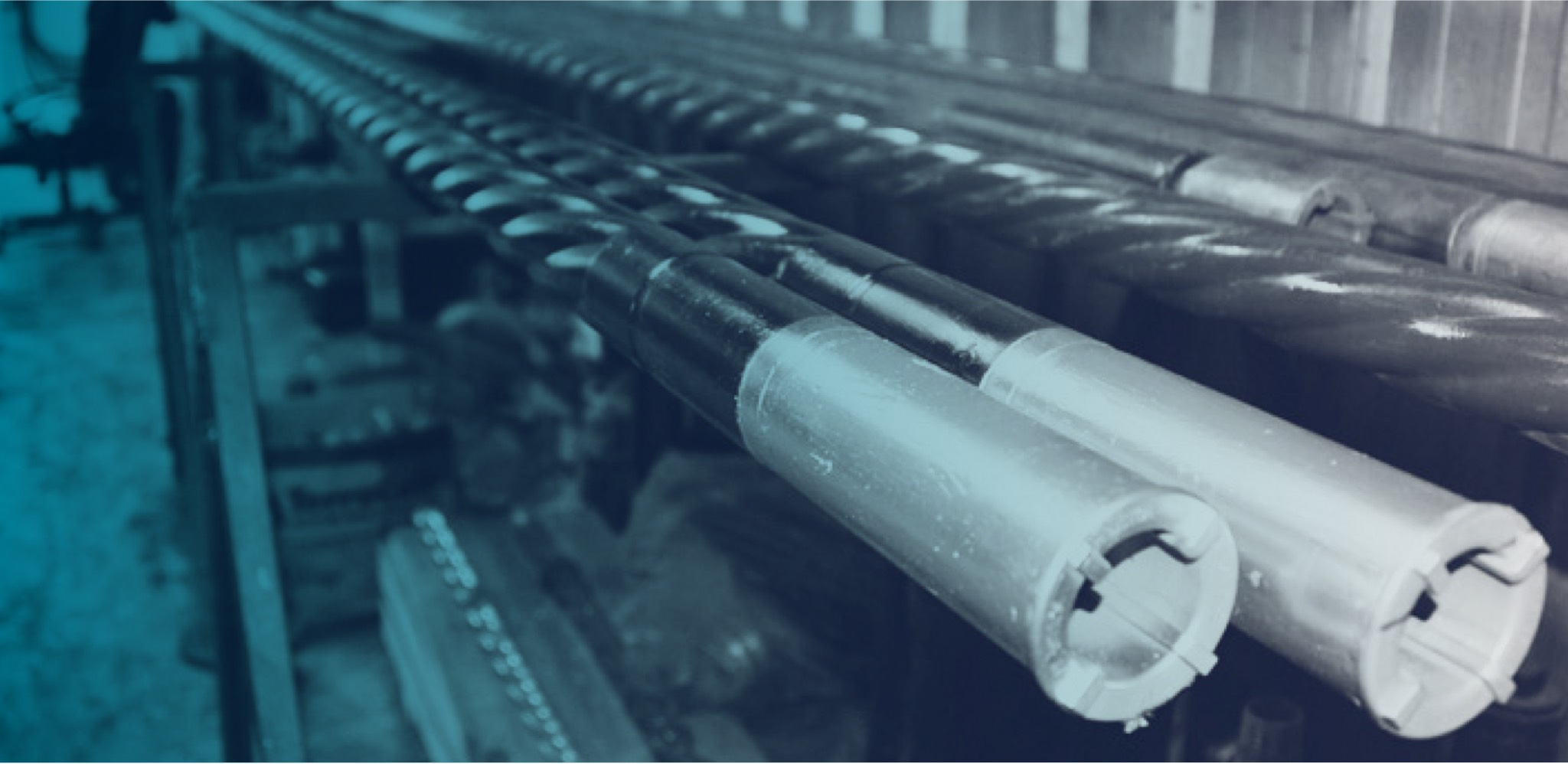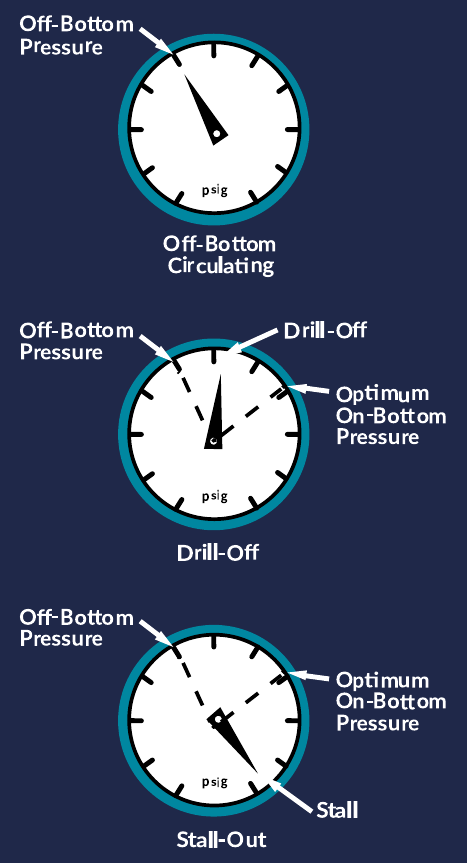
Drilling Motors
Horizontal Technology, Inc. provides the best HDD Motors available.
A high-torque, low flow motor, engineered to meet the unique
demands of horizontal directional drilling, these rugged motors
improve penetration rates and last longer, saving the contractor
time and money.
Drilling Considerations
The performance and life of the motor is determined by the environment in which it operates. To ensure optimum performance and longest life avoid:
- Abrasive solids in the circulation system. The drilling fluid should have the least possible sand content (1% or less is recommended).
- Excessive rotation of motor set with higher bend (Anything over 1.5 degrees is considered high bend).
- Exceeding recommended weight on bit (WOB) loads.
- Exceeding the recommended pressure drop across the bit & motor.
- Repeated stalling of the motor.
- Tripping without actuation of pumps.
Differential Pressure
The primary rig reference for HTI motor operation is the rig pressure gauge. Weight (push) indicator can also be used as a drilling reference; however, it may give inaccurate information about the actual WOB because of other factors, such as the size of the hole the pipe is in, softness of the formation, or restrictions reducing the actual WOB. The only true indication of the motor performance is the pressure gauge.
When the motor is off-bottom circulating the pressure gauge shows the total amount of pressure required to pump a known volume of fluid through the motor and bit. This is called the off-bottom pressure.
WOB (placing weight on the bit) creates a higher total pressure. The difference between the off-bottom pressure and the pressure when weight is applied to the bit is called the pressure differential.
Operate the motor at the recommended differential (the PSI difference between off-bottom pressure and on-bottom pressure). As weight is applied to the bit the pressure will increase. As the bit advances the pressure will decrease until more push (weight) is applied. For best performance and penetration rates maintain optimum on-bottom pressure.
When too much weight or push is applied, exceeding the maximum differential pressure, the motor will stall. The bit will cease to rotate causing the pressure gauge to rise abruptly. Stall pressure is about twice the recommended optimum differential pressure. When a stall happens, stop the pumps and reduce the WOB allowing the pressure to decrease to recommended operational pressures. Do not pull the motor off bottom until normal pressure is resumed. Continual stalling and operating motors in stalled condition can seriously damage the motor. Stalling can lead to tearing or “chunking” of the stator elastomer. When a stator is chunked, motor performance will dramatically decrease or the motor will possibly cease to function.

Features:
» Low-Flow » High_Torque » Optimal RPM » Shorter Length » Adjustable Housing» Safty Catch Sub
Benefits:
» Maximum performance at lower GPM lowers mud costs, reduces wear & tear on your pumps & cleaning equipment.
» Increases penetration rates and reduces damaging stalls.
» Motor is designed to better accommodate tri-cone bit RPM specifications and extend life of bits.
» Allows the steering tool to be closer to the bit and improves guidance capabilities.
» Allows on site adjustments, reduces downtime and improves guidance capabilities.
» Offers protection from possible fishing operations.
